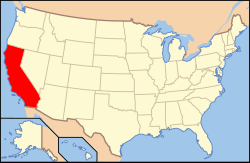This article needs additional citations for verification .(December 2020) |
| Year | Republican / Whig | Democratic | Third party(ies) | |||
|---|---|---|---|---|---|---|
| No. | % | No. | % | No. | % | |
| 1852 | 35,972 | 46.83% | 40,721 | 53.02% | 117 | 0.15% |
| 1856 | 20,704 | 18.78% | 53,342 | 48.38% | 36,209 | 32.84% |
| 1860 | 38,733 | 32.32% | 37,999 | 31.71% | 43,095 | 35.96% |
| 1864 | 62,053 | 58.60% | 43,837 | 41.40% | 0 | 0.00% |
| 1868 | 54,588 | 50.24% | 54,068 | 49.76% | 0 | 0.00% |
| 1872 | 54,007 | 56.38% | 40,717 | 42.51% | 1,061 | 1.11% |
| 1876 | 79,258 | 50.88% | 76,460 | 49.08% | 66 | 0.04% |
| 1880 | 80,282 | 48.89% | 80,426 | 48.98% | 3,510 | 2.14% |
| 1884 | 102,369 | 51.97% | 89,288 | 45.33% | 5,331 | 2.71% |
| 1888 | 124,816 | 49.66% | 117,729 | 46.84% | 8,794 | 3.50% |
| 1892 | 118,027 | 43.78% | 118,174 | 43.83% | 33,408 | 12.39% |
| 1896 | 146,688 | 49.16% | 144,766 | 48.51% | 6,965 | 2.33% |
| 1900 | 164,755 | 54.37% | 124,985 | 41.25% | 13,264 | 4.38% |
| 1904 | 205,226 | 61.84% | 89,404 | 26.94% | 37,248 | 11.22% |
| 1908 | 214,398 | 55.46% | 127,492 | 32.98% | 44,707 | 11.56% |
| 1912 | 3,914 | 0.58% | 283,436 | 41.81% | 390,594 | 57.61% |
| 1916 | 462,516 | 46.27% | 466,289 | 46.65% | 70,798 | 7.08% |
| 1920 | 624,992 | 66.20% | 229,191 | 24.28% | 89,867 | 9.52% |
| 1924 | 733,250 | 57.20% | 105,514 | 8.23% | 443,136 | 34.57% |
| 1928 | 1,162,323 | 64.69% | 614,365 | 34.19% | 19,968 | 1.11% |
| 1932 | 847,902 | 37.39% | 1,324,157 | 58.39% | 95,907 | 4.23% |
| 1936 | 836,431 | 31.70% | 1,766,836 | 66.95% | 35,615 | 1.35% |
| 1940 | 1,351,419 | 41.34% | 1,877,618 | 57.44% | 39,754 | 1.22% |
| 1944 | 1,512,965 | 42.97% | 1,988,564 | 56.48% | 19,346 | 0.55% |
| 1948 | 1,895,269 | 47.13% | 1,913,134 | 47.57% | 213,135 | 5.30% |
| 1952 | 2,897,310 | 56.35% | 2,197,548 | 42.74% | 46,991 | 0.91% |
| 1956 | 3,027,668 | 55.39% | 2,420,135 | 44.27% | 18,552 | 0.34% |
| 1960 | 3,259,722 | 50.10% | 3,224,099 | 49.55% | 22,757 | 0.35% |
| 1964 | 2,879,108 | 40.79% | 4,171,877 | 59.11% | 6,601 | 0.09% |
| 1968 | 3,467,664 | 47.82% | 3,244,318 | 44.74% | 539,605 | 7.44% |
| 1972 | 4,602,096 | 55.00% | 3,475,847 | 41.54% | 289,919 | 3.46% |
| 1976 | 3,882,244 | 49.35% | 3,742,284 | 47.57% | 242,589 | 3.08% |
| 1980 | 4,524,858 | 52.69% | 3,083,661 | 35.91% | 978,544 | 11.40% |
| 1984 | 5,467,009 | 57.51% | 3,922,519 | 41.27% | 115,895 | 1.22% |
| 1988 | 5,054,917 | 51.13% | 4,702,233 | 47.56% | 129,914 | 1.31% |
| 1992 | 3,630,574 | 32.61% | 5,121,325 | 46.01% | 2,379,822 | 21.38% |
| 1996 | 3,828,380 | 38.21% | 5,119,835 | 51.10% | 1,071,269 | 10.69% |
| 2000 | 4,567,429 | 41.65% | 5,861,203 | 53.45% | 537,224 | 4.90% |
| 2004 | 5,509,826 | 44.36% | 6,745,485 | 54.30% | 166,548 | 1.34% |
| 2008 | 5,011,781 | 36.90% | 8,274,473 | 60.92% | 296,829 | 2.19% |
| 2012 | 4,839,958 | 37.07% | 7,854,285 | 60.16% | 361,572 | 2.77% |
| 2016 | 4,483,814 | 31.48% | 8,753,792 | 61.46% | 1,005,843 | 7.06% |
| 2020 | 6,006,518 | 34.26% | 11,110,639 | 63.37% | 414,688 | 2.37% |
| 2024 | 6,081,697 | 38.28% | 9,276,179 | 58.38% | 531,308 | 3.34% |
| Elections in California |
|---|
 |

Elections in California are held to fill various local, state and federal seats. In California, regular elections are held every even year (such as 2006 and 2008); however, some seats have terms of office that are longer than two years, so not every seat is on the ballot in every election. Special elections may be held to fill vacancies at other points in time. Recall elections can also be held. Additionally, statewide initiatives, legislative referrals and referendums may be on the ballot.
Contents
- Elected offices
- Federal
- State
- Local
- Voting rights and voter powers
- Districting
- Procedure
- Ballot propositions
- Political parties
- See also
- References
- Bibliography
- External links
In a 2022 study, California was ranked as the 6th easiest state for citizens to vote in. [2]
